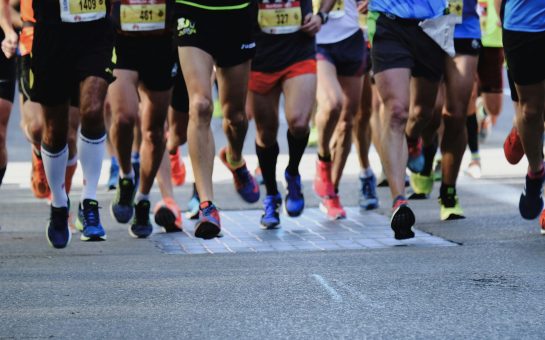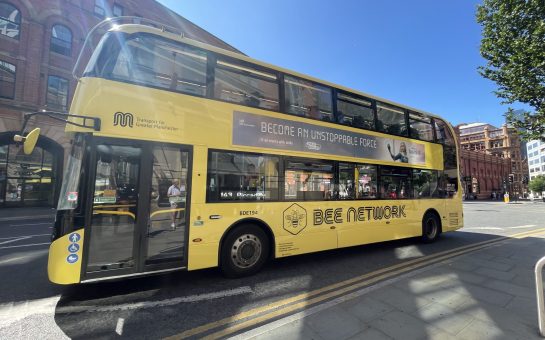A Salford nuclear physicist tipped to win a Nobel prize was killed in Australia by a joyrider high on a cocktail of drugs who ploughed a stolen 4×4 into his taxi, an inquest has concluded.
Dr Sean Barrett, 36, had recently recovered from cancer and was an active fundraiser for Macmillan.
Originally from Salford but living in London at the time of his death, Dr Barrett’s work took him all over the world and during his time in Australia he was due to give a speech at the University of Western Australia on quantum physics.
Dr Barrett had been in the country for less than an hour when the Antony Fogarty jumped at least two red lights at speeds of up to 100mph.
His vehicle hit the scientist’s cab with such force it skidded 45 metres down the road.
The Imperial College London lecturer and researcher was killed instantly along with 28-year-old taxi driver and expectant father Kuldeep Singh on their journey from Perth Airport to the city.
Fogarty, 24, was high on a cocktail of cannabis and also amphetamine at the time of the 2am crash and was being tracked by police helicopter for two hours.
He was also subject to a three-year driving disqualification and had never held a Western Australia driving licence.
He later pleaded guilty to two counts of manslaughter and was jailed for 11 years last January. He will be eligible for parole in nine years.
At an inquest in Manchester on Monday, a coroner recorded a conclusion of unlawful killing, and Fogarty was condemned as a ‘repulsive monster’ by Dr Barrett’s mother Janet.
Former art teacher Mrs Barrett said: “He could have got 22 years to life yet he only got 11. I don’t understand it. He killed two people.
“It was two counts of manslaughter but he will out in no time unless somebody blocks his parole. He will come out and kill somebody else. That’s my view on the repulsive monster who killed my son.”
She said the Cambridge University graduate, who held a prestigious Royal Society research fellowship, was thought by many at Imperial College to be capable of winning a Nobel Prize.
She added that he believed his work, which included plans to build the world’s first quantum computer and mathematical analysis of cancer treatments, could ‘change the world beyond all imagination’.
Mrs Barrett, who also has a 38-year-old daughter Katie who is a teacher in Milan, added: “Sean was more than brilliant – he was an important man.
“He was an achiever, an accomplished theoretical physicist, a graduate of Cambridge, a research fellow, doing research and teaching at Imperial College London.
“They thought he would have gone on to win a Nobel Prize. The fact he had been awarded a Royal Society fellowship allowed him to do what he wanted to do. He had a brilliant mind and he was a special person.
“He was working on a hard problem and he believed that the solution would change the world beyond all imagination. He was thinking that it would perhaps save the planet.
“Finally, he was a humane, kind, gentle genius who tried to change this world for the better. His family and friends find it impossible to sum up what he meant to us and what his death means.”
Dr Barrett died on Friday October 19 2012, but there had been a lengthy delay waiting for the criminal proceedings to conclude and for documents to be delivered to England.
A post-mortem concluded that he died at the scene from multiple injuries which were described as ‘non-survivable’.
Reading the facts of the case, coroner Fiona Borrill said: “On Friday October 19 2012 the accused was driving a stolen Toyota F3 Cruiser wagon.
“A police unmarked vehicle attempted to stop him on a number of occasions by activating the emergency lights and sirens but he failed to stop and drove away in a dangerous manner.”
The coroner said that at 12.02am Fogarty was detected and recorded going through a red traffic light and at 12.40am he was detected driving at 125kph in a location where the area speed limit is 60kph.
Then at 1.50am he drove the stolen vehicle ‘grossly in excess of the speed limit’. He was detected doing between 140 and 160kph.
Coroner Borrill added: “He approached the intersection at the time the traffic control lights were red and proceeded through the intersection against the red signal with no attempt to stop.
“At that moment a Ford Vulcan taxi lawfully entered the same intersection with the intention of turning right. In making the manoeuvre it turned into the path of the stolen vehicle.
“The driver Kuldeep Singh and Sean Barrett collided heavily with the front of the stolen car with enough force to change the taxi’s direction of travel and push the vehicle 45 metres east.
“At the time the accused was under observation by police helicopter and not being pursued by a police vehicle. Enquiries conducted show at the time the accused had never held a Western Australia drivers licence.”
Reaching her conclusion, Ms Borrill said the risk of death was ‘almost inevitable’ when Fogarty – who had a number of previous convictions and a history of drug addiction – got behind the wheel.
She said: “Clearly the driver of the stolen car did owe a duty of care towards Sean as another road user and clearly that has been breached.
“It was a reasonably foreseeable consequence that as a result of the manner of his driving that the risk of death was almost inevitable if he collided with another vehicle.
“This driver was driving the vehicle at speed for a very lengthy period of time while the police were trying to stop him. The speeds recorded range from 140-160kmh which is excessive to say the least.
“More importantly it is clear from the toxicology results that this driver was under the influence of illicit substances – amphetamines and cannabis. That would have seriously impacted his driving.
“This must have been a tragic loss of a very special person who had a massive amount to give and so much more to achieve.”
Dr Barrett also left behind a girlfriend, Ruth and a nephew, Isaac, who was born a year after his death.
Image courtesy of Facebook with thanks



